Enable Early Mobility.
Optimize Healing.

We can do better.
Introducing Tendon Seam
Fixation stronger than tendon
Anatomic tendon tension and stiffness
Maximal footprint coverage
Stable construct
AND promotes healing
See the difference
2.5 Weeks
Patients prescribed to end sling use “as-tolerated” reported a median duration of 2.5 weeks12
10X Stable
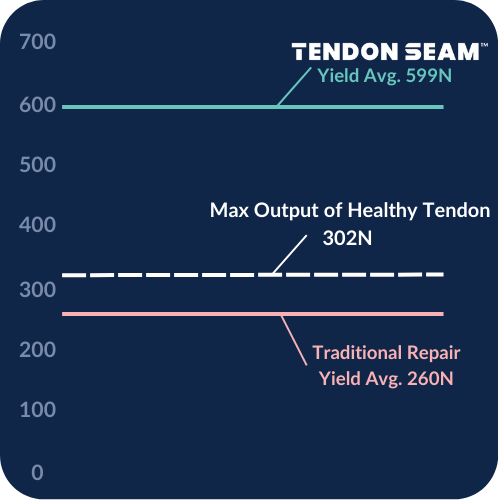
2X Strong
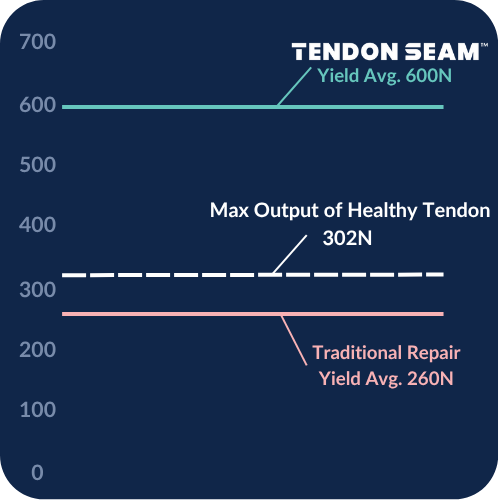
2.5 Weeks
10X Stable
2X Strong
2.5 Weeks
Patients prescribed to end sling use “as-tolerated” reported a median duration of 2.5 weeks12
10X Stable
Repair is 10 times more stable than traditional methods 11, 12

2.5 Weeks
Repair is 2 times stronger than native, healthy tendon11, 12
Stories from the Clinic
Over 1000 Patients treated!
How it works
Tendon first, anatomic repair
Seam runs perpendicular to the load
Small, tightly spaced stitches
Independently compressed & locked
Continuous suture
Bone venting
5 Keys to an Optimized Repair
1. Strong
2. Broad
3. Multi-directional
4. Stable
5. Regenerative
1. Strong
A repair that can withstand the forces generated by a healthy supraspinatus and infraspinatus at time zero. 13
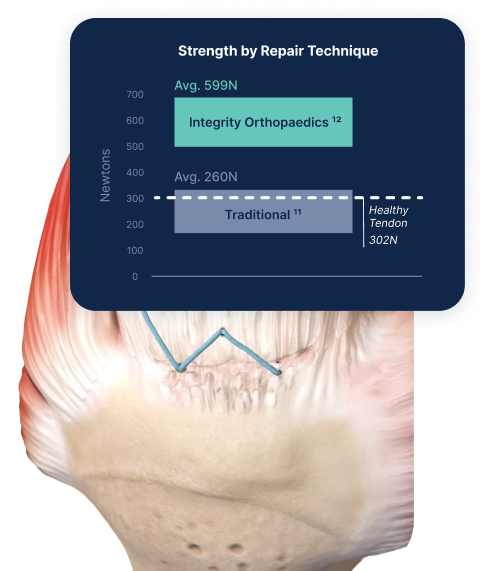
2. Broad
A scalable repair enables multiple stitches to span the entire tear regardless of its size.

3. Multi-directional
Load sharing in multiple directions supports daily living demands.

4. Stable
Each stitch minimizes gap formation to limit micromotion and target compression throughout the healing period.
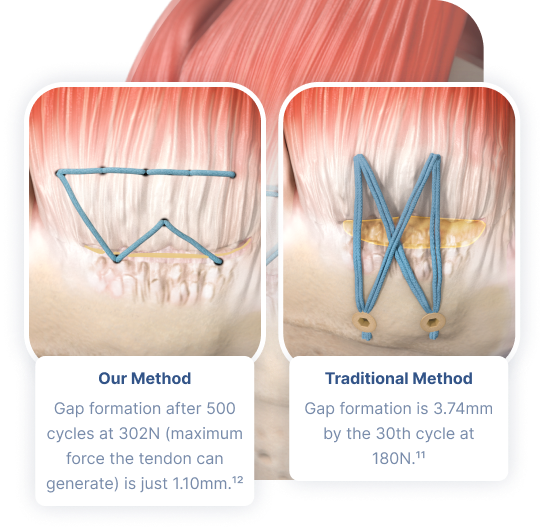
5. Regenerative
A technique that promotes a biologically friendly environment that aids in long term healing of the tendon to bone.
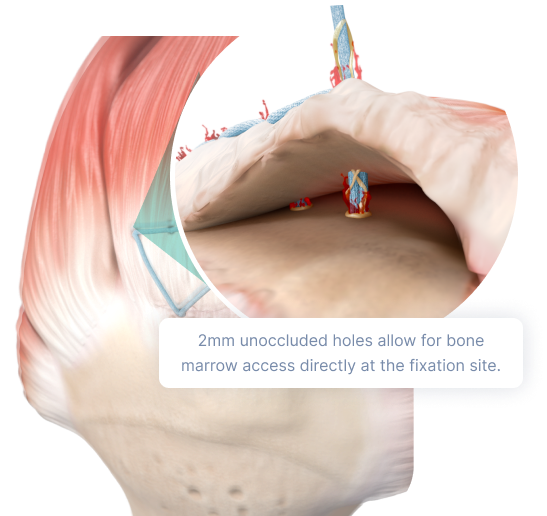
5 Keys to an Optimized Repair
A repair that can withstand the forces generated by a healthy supraspinatus and infraspinatus at time zero. 13
A scalable repair enables multiple stitches to span the entire tear regardless of its size.
Load sharing in multiple directions supports daily living demands.
Each stitch minimizes gap formation to limit micromotion and target compression throughout the healing period.
A technique that promotes a biologically friendly environment that aids in long term healing of the tendon to bone.



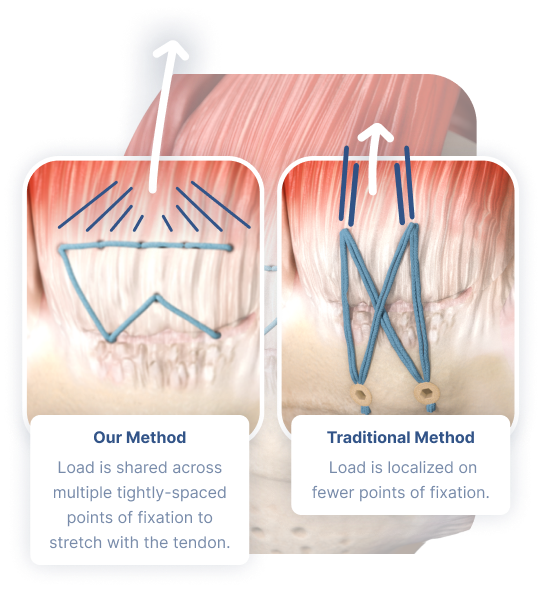


5 Keys to an Optimized Repair


A repair that can withstand the forces generated by a healthy supraspinatus and infraspinatus at time zero. 13
A repair that can withstand the forces generated by a healthy supraspinatus and infraspinatus at time zero. 13

A scalable repair enables multiple stitches to span the entire tear regardless of its size.
A scalable repair enables multiple stitches to span the entire tear regardless of its size.

Load sharing in multiple directions supports daily living demands.
Load sharing in multiple directions supports daily living demands.

Each stitch minimizes gap formation to limit micromotion and target compression throughout the healing period.
Each stitch minimizes gap formation to limit micromotion and target compression throughout the healing period.

A technique that promotes a biologically friendly environment that aids in long term healing of the tendon to bone.
A technique that promotes a biologically friendly environment that aids in long term healing of the tendon to bone.
5 Keys to an Optimized Repair
A repair that can withstand the forces generated by a healthy supraspinatus and infraspinatus at time zero. 13
A scalable repair enables multiple stitches to span the entire tear regardless of its size.
Load sharing in multiple directions supports daily living demands.
Each stitch minimizes gap formation to limit micromotion and target compression throughout the healing period.
A technique that promotes a biologically friendly environment that aids in long term healing of the tendon to bone.




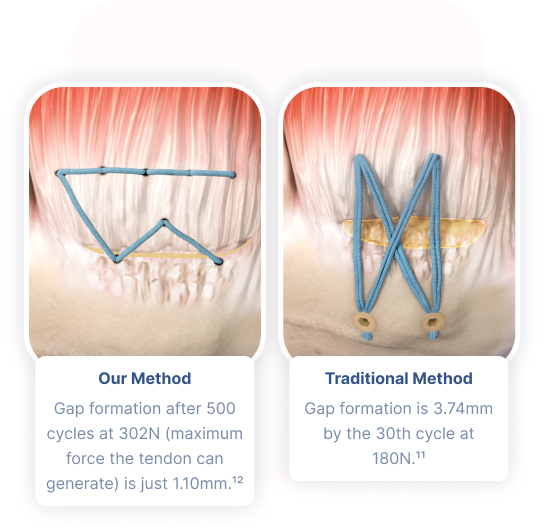

Before & After
Enable Early Mobility. Optimize Healing.
Patient Experiences
Patients with a traditional repair on one shoulder and an Integrity Orthopaedics Repair on the other share their experience.
I can’t tell you that I even knew the nerve block went away”
– Mr. Peel
I would say I’m at least a month, a month and a half, ahead on this one…”
I would say I’m at least a month, a month and a half, ahead on this one…”
– Mr. PIZZUTTI
Follow us on Linkedin


Integrity Orthopaedics
Hello, This is a LinkedIn post design!
Hope you enjoy my post!


Integrity Orthopaedics
Hello, This is a LinkedIn post design!
Hope you enjoy my post!
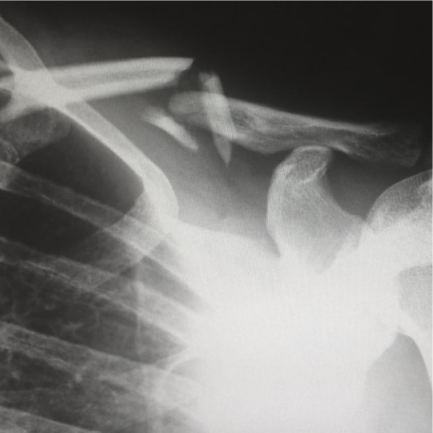

Integrity Orthopaedics
Hello, This is a LinkedIn post design!
Hope you enjoy my post!

